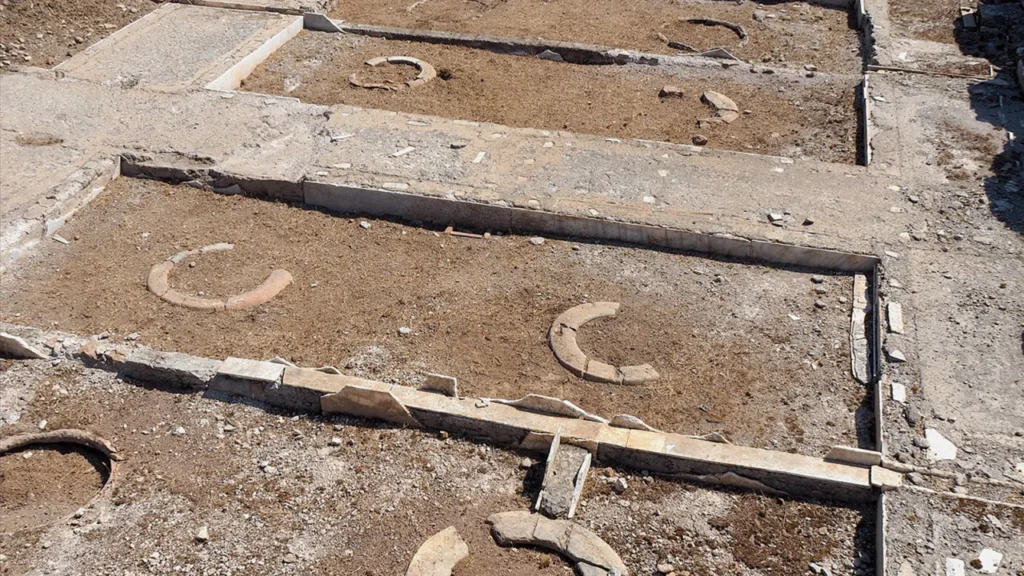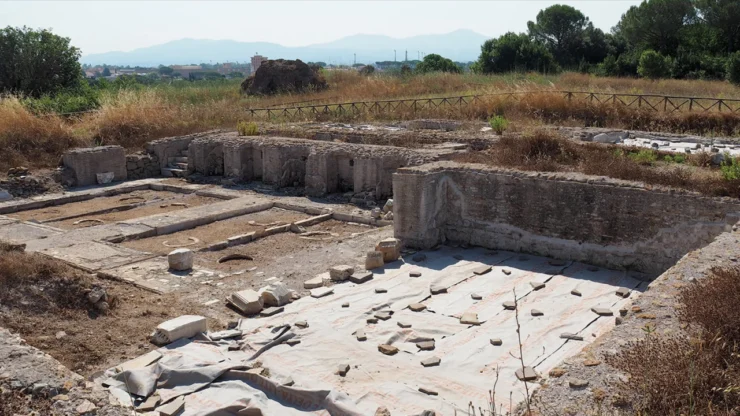Dating to the mid-third century AD, it is the second known example of a wineries built as a showplace for the rich and powerful, and perhaps even a Roman emperor.
The Villa of the Quintilii was spread along a basalt ridge descending from the Alban Hills southeast of Rome. It is an ancient Roman villa. It was built by the wealthy and cultured brothers Sextus Quintilius Valerius Maximus and Sextus Quintilius Condianus (consuls in 151 AD). The ruins of this villa are so large that when it was first excavated, it was called Roma Vecchia (Old Rome) by the locals because it occupied such a huge area. The villa includes a large spa fed by its own aqueduct and a hippodrome dating back to the fourth century, when the villa was an Imperial property. (Emperor Commodus wanted the villa badly enough to kill its owners and confiscated it in 182.)
Excavations of the villa began in 1998, but a 2017 study focusing on the villa’s gates and towers revealed a “lavishly decorated” complex of rooms and channels used to produce and store wine, according to information published by the University of Cambridge.
The space had all the characteristics of a winery. There was equipment that included a large, marble grape processing area, presses, a vat for collecting and settling the grapes, and channels leading to the wine cellar, which was filled with ceramics for storage.
These features are typical of third-century wineries. But the researchers say what sets the winery apart is its “highly unusual” decoration and architecture, displaying a luxury rare in ancient production sites.



Three dining rooms encircled the winery, giving inquisitive onlookers a view of the production process. According to academics, this is something that is mentioned in old letters that “recount the act of banqueting while watching and listening to the workers treading grapes.”
According to lead author Emlyn Dodd at the Institute of Classical Studies, University of London, “Agricultural labour was romanticised by the ruling classes of many ancient cultures, especially as it was often the source of both their wealth and status. The excavations at the Villa of the Quintilii reveal to us how ancient Roman elites reimagined the annual vintage as a ‘theatrical’ performance, prioritising the experience of those observing over the practical needs of the workers.”
Research suggests that an emperor and his courtiers may have visited the villa every year to enjoy the experience.
“It would have been a real spectacle for those watching, the combination of fountains of wine and water, luxurious materials – especially the thin white marble channels through which the wine could be seen flowing – and the sounds of the workers and music would have resulted in a theatrical show,” Dodd says.
The earliest evidence of wine production dates to 6,000-5,800 BC, when Neolithic pottery sherds containing traces of grape wine were found. Today, the region of Georgia is considered the birthplace of wine production based on archaeological and archaeobotanical studies.
